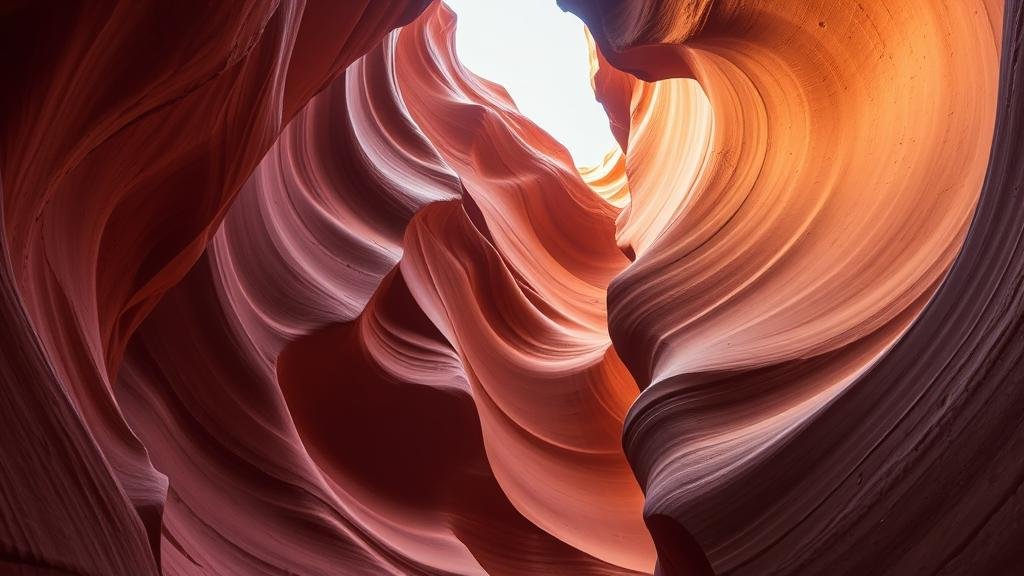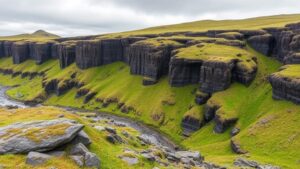Investigating the natural red sandstone formations of Antelope Canyon in Arizona.
Investigating the Natural Red Sandstone Formations of Antelope Canyon in Arizona
Antelope Canyon, located near the town of Page in northern Arizona, is renowned for its stunning natural red sandstone formations. Formed by the erosive forces of water, this slot canyon is characterized by its wave-like structure and vibrant colors, making it a popular destination for photographers and nature enthusiasts. In this article, we will delve into the geological formation, cultural significance, and practical information for visiting this iconic landscape.
Geological Formation of Antelope Canyon
The magnificent formations of Antelope Canyon were shaped over thousands of years by flash flooding and erosion. canyon consists primarily of Navajo sandstone, which was formed during the Jurassic period, approximately 190 million years ago. This sandstones striking red hues come from iron oxide (rust) within the rock.
Flash flooding is a critical natural force that has sculpted the narrow passages of Antelope Canyon. During significant rainfall events, water surges through the canyon, carrying sand and other materials. This sediment acts like sandpaper, grinding away at the rock and creating the smooth, undulating surfaces that characterize the canyons walls.
Exploration of Antelope Canyon
Antelope Canyon is divided into two main sections: Upper Antelope Canyon and Lower Antelope Canyon. Each offers a unique experience:
- Upper Antelope Canyon: Known locally as Tse bighanilini (the place where water runs through the rocks), this section is the more accessible and popular area, featuring wider openings that allow for more natural light. Photographers flock to Upper Antelope to capture the famous beams of light that penetrate the narrow openings, especially during midday.
- Lower Antelope Canyon: This section is narrower, with more challenging access, but it rewards visitors with winding passageways and fewer crowds. Visitors often describe Lower Antelope Canyon as more adventurous due to its winding staircases and tighter passages.
Cultural Significance
Antelope Canyon holds cultural importance for the Navajo Nation, the indigenous people who inhabit the region. The canyons name reflects the symbolism of the antelope, which is important in Navajo mythology. Also, Antelope Canyon is located on Navajo land, and guided tours are required to visit, ensuring that the cultural heritage is preserved while also promoting local economic benefits.
Since the early 2000s, the area has gained enormous popularity, leading to increased tourism. This attention has helped raise awareness of Navajo culture and provided funds for local infrastructure and schools.
Visiting Antelope Canyon
For those looking to explore Antelope Canyon, planning is essential. Here are some key details to consider:
- Location: Antelope Canyon is located in Page, Arizona, just off Highway 98. It is roughly 270 miles from Las Vegas and 120 miles from the Grand Canyon.
- Best Time to Visit: The ideal time to visit is between late March and early October, with the best sunlight conditions for photography occurring in June and July.
- Guided Tours: Entry into either section of the canyon requires a guided tour, provided by several licensed operators. Reservations are highly recommended, especially during peak season.
Real-World Applications and Ecological Considerations
The popularity of Antelope Canyon raises ecological considerations as well. The influx of tourists can strain natural resources and lead to erosion. Visitors are encouraged to respect the guidelines set forth by tour operators, which aim to minimize environmental impact and protect the delicate ecosystem of the canyon.
Also, education plays a crucial role in conservation. Many tour guides provide insights into the regions geology, cultural heritage, and environmental challenges, fostering a greater appreciation for the natural world.
Conclusion
Antelope Canyon is more than just a stunning geological wonder; its a blend of natural beauty, cultural significance, and environmental conservation. Whether youre an avid photographer, a geology enthusiast, or a cultural history buff, Antelope Canyon provides a captivating experience. By understanding both the beauty and the challenges of this remarkable formation, visitors can engage responsibly with one of natures most extraordinary creations.
When planning your trip, remember to prioritize guided tours, respect the land, and immerse yourself in the natural beauty and cultural richness that Antelope Canyon offers.



